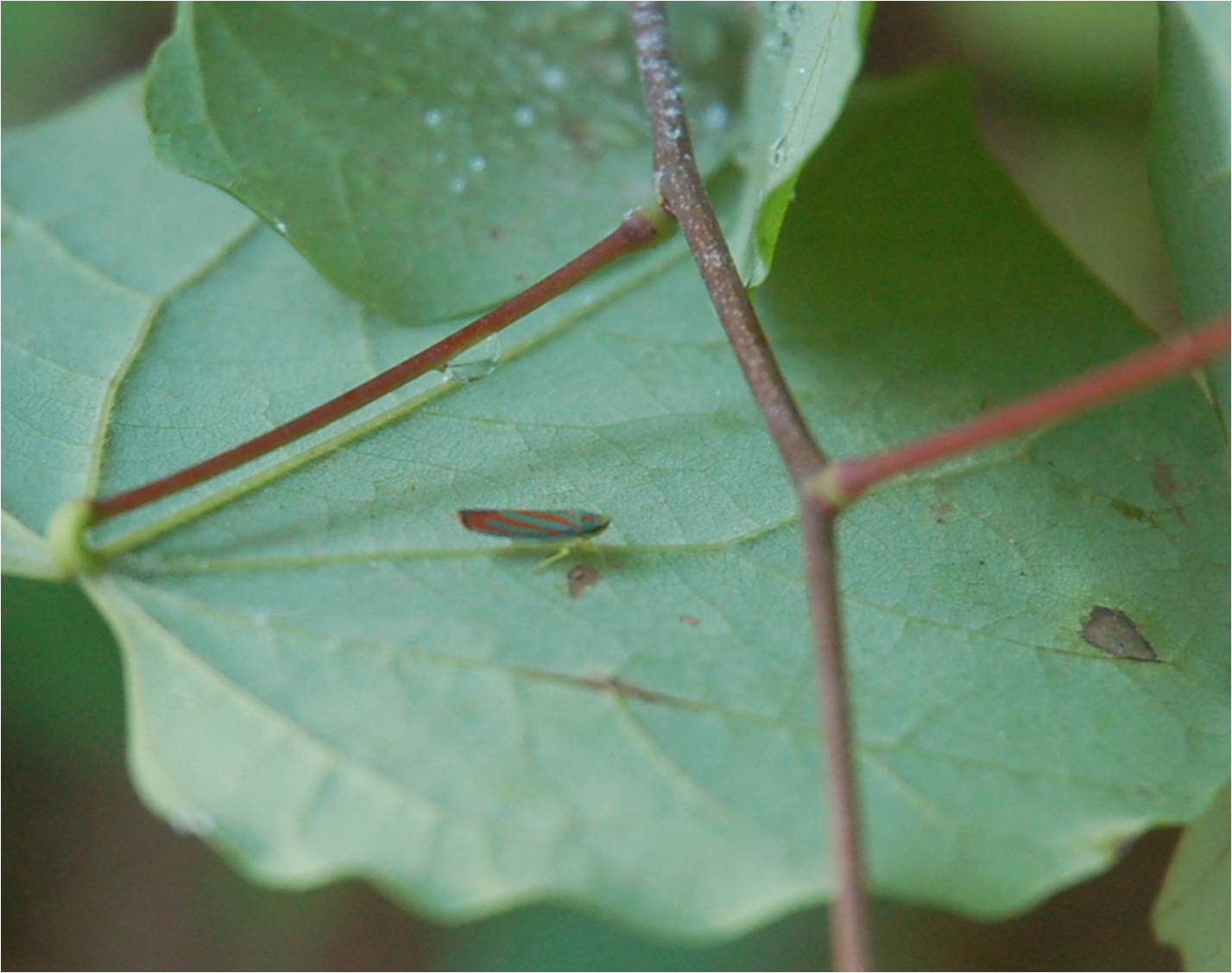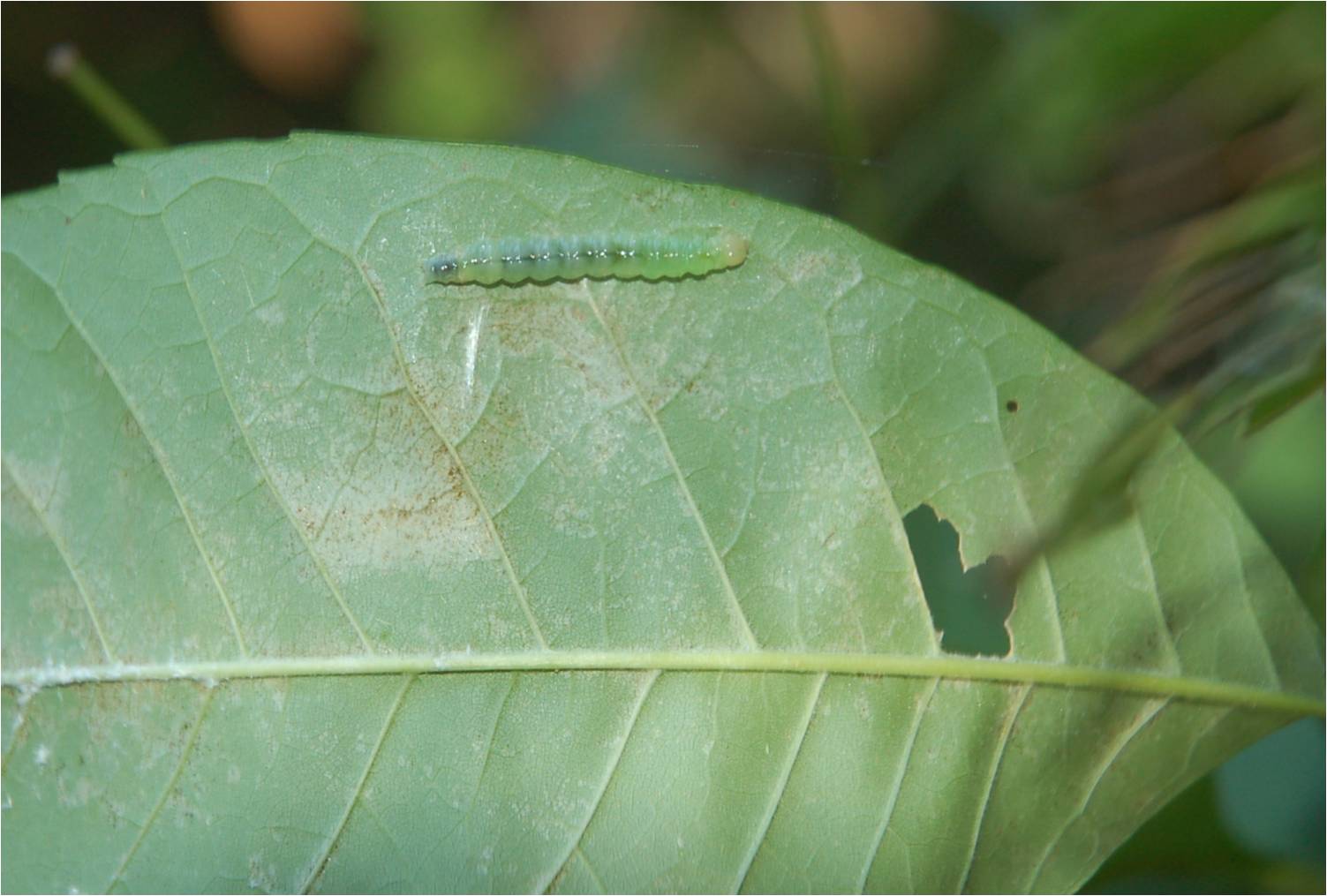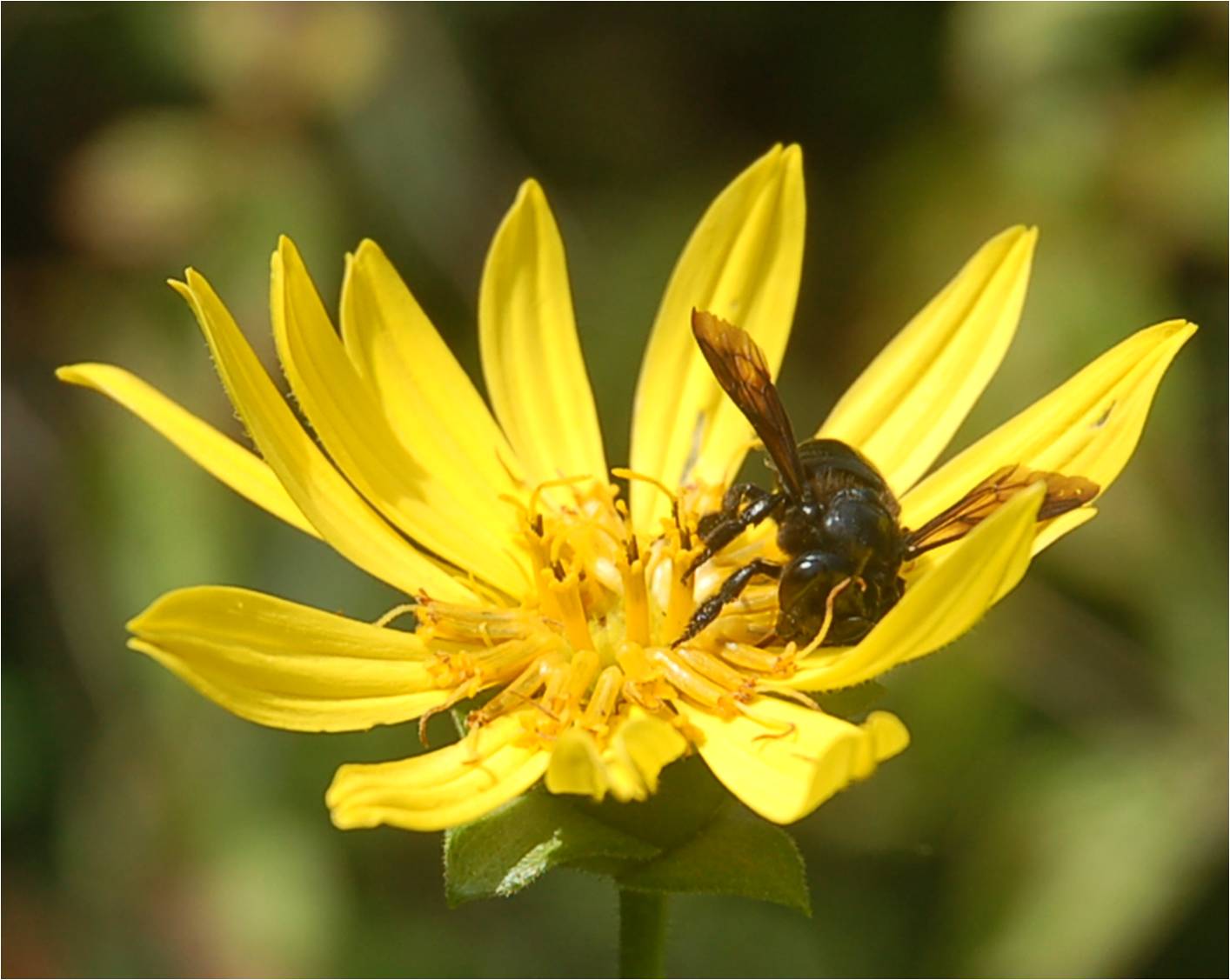
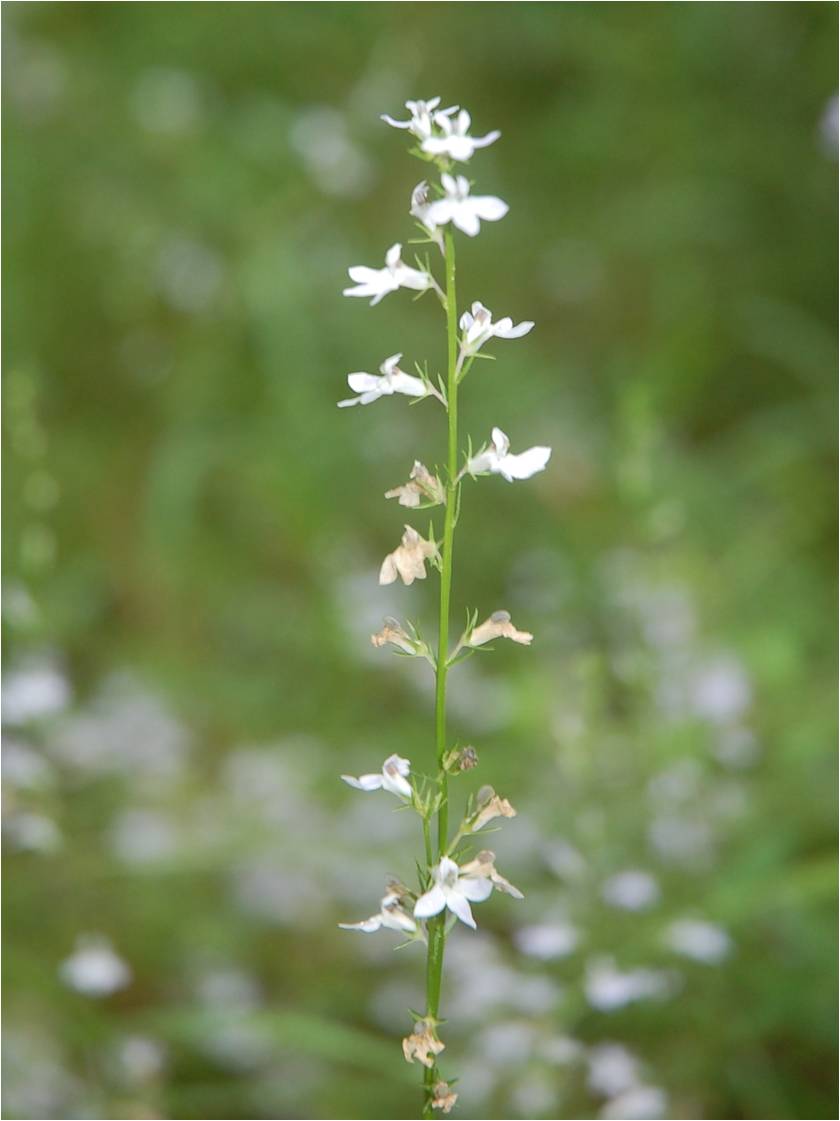
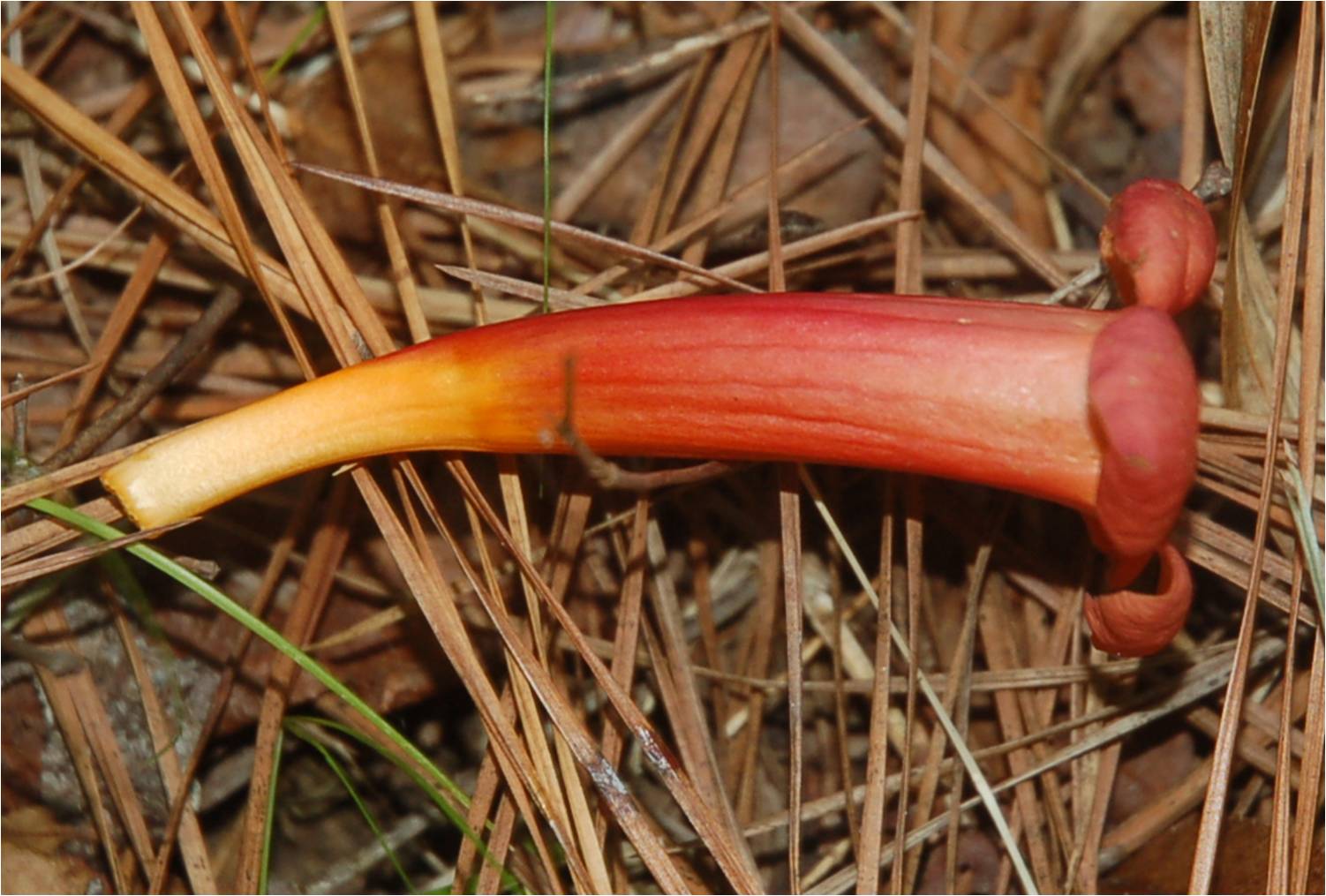
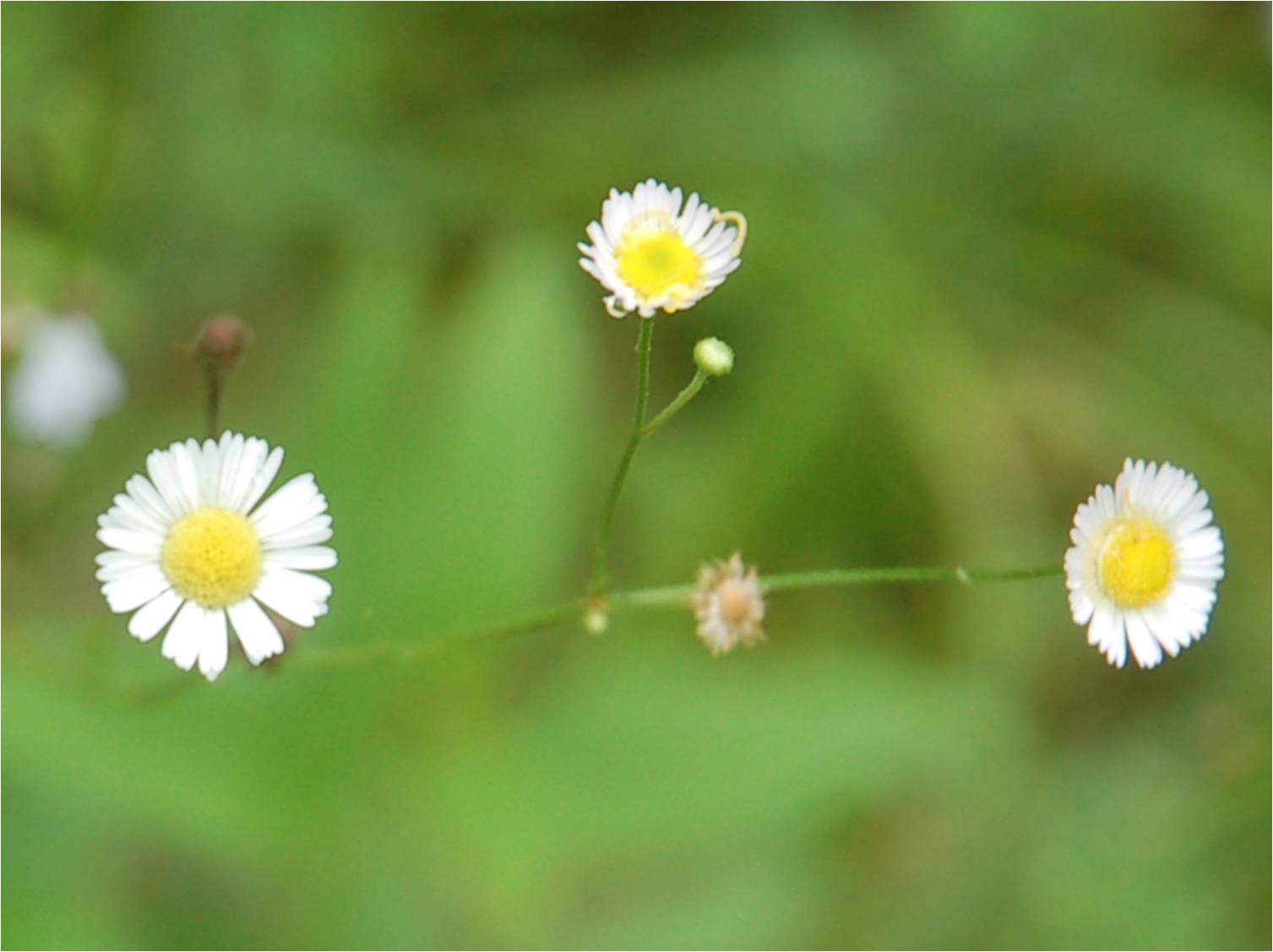
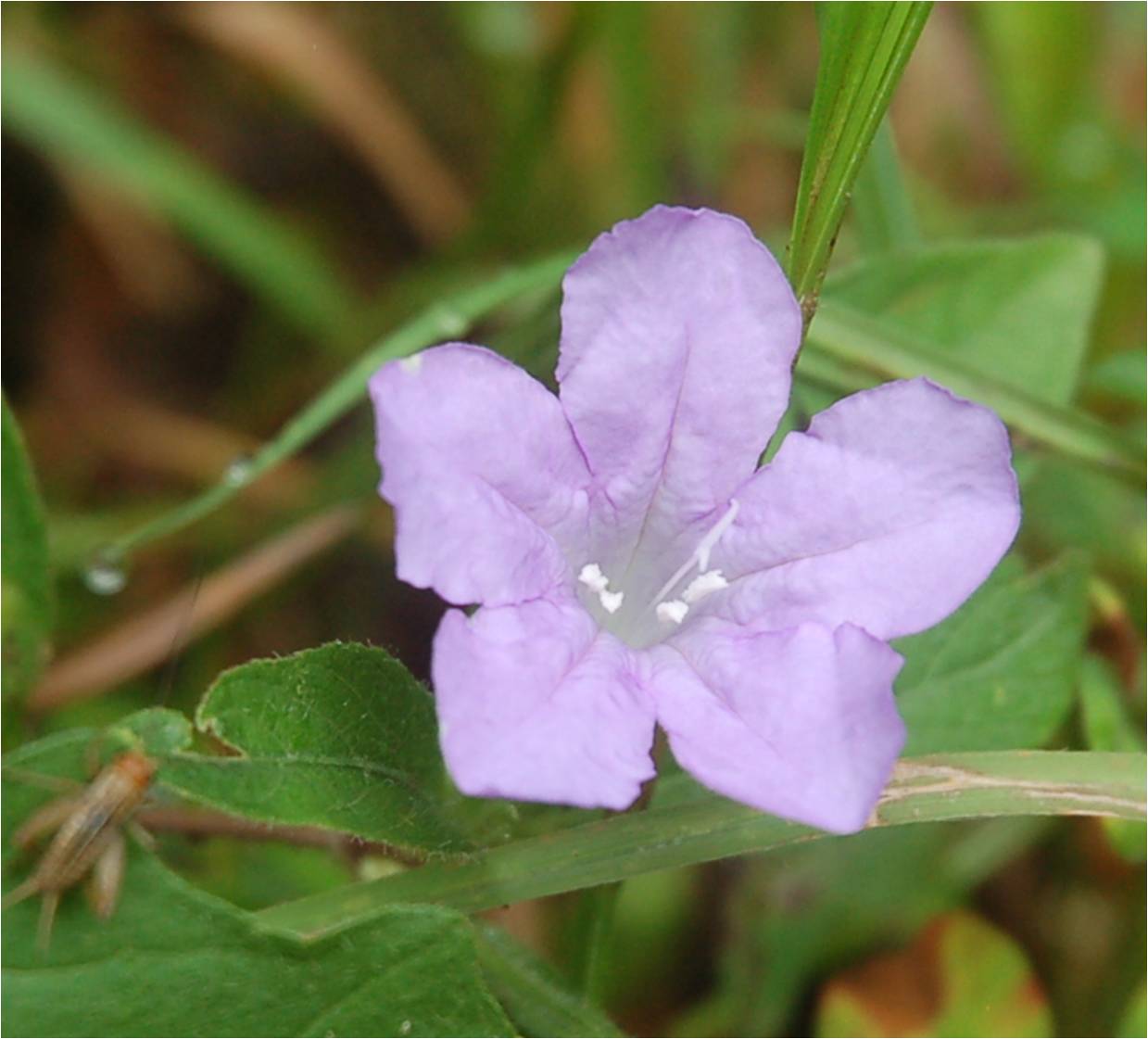
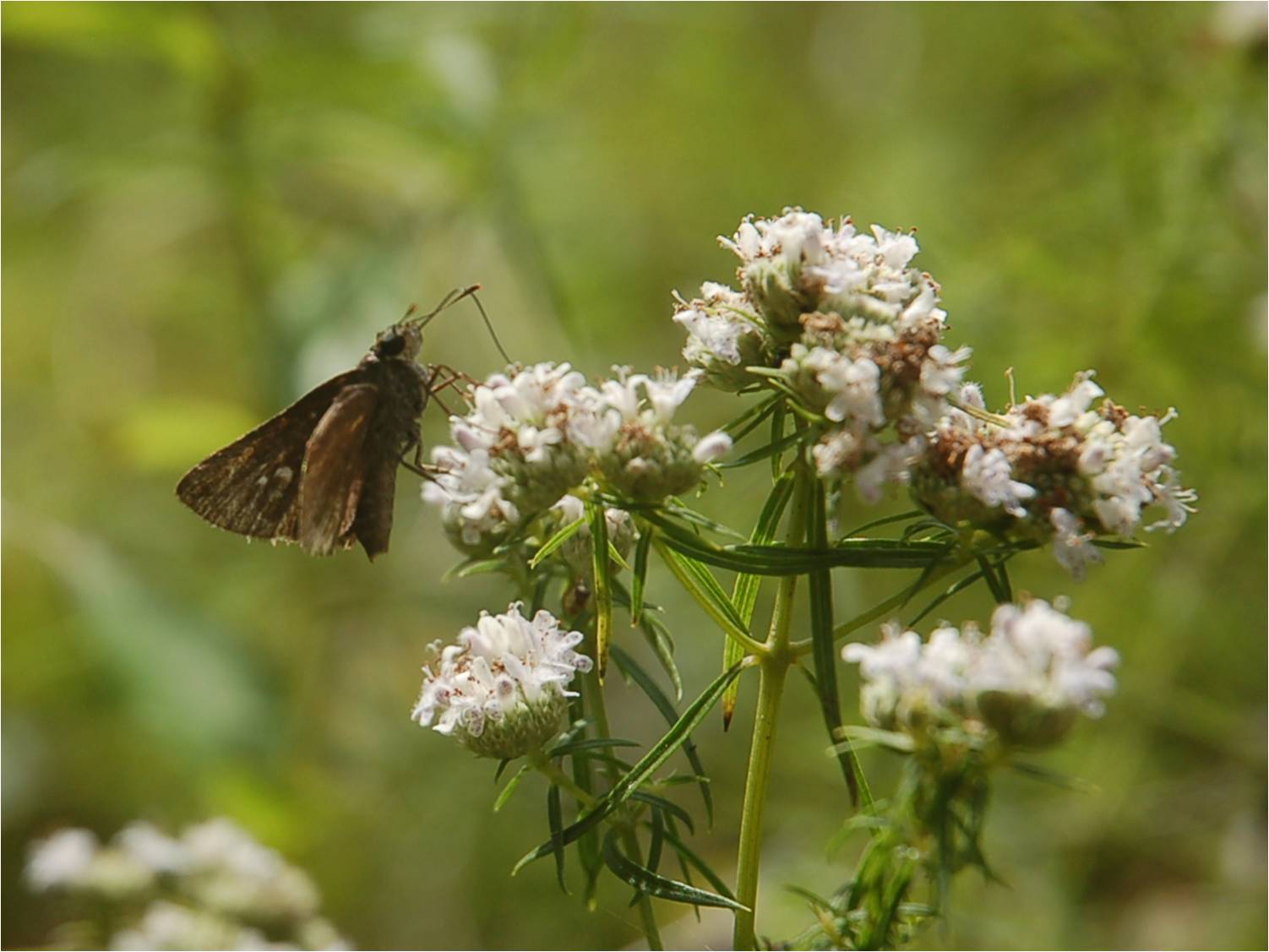
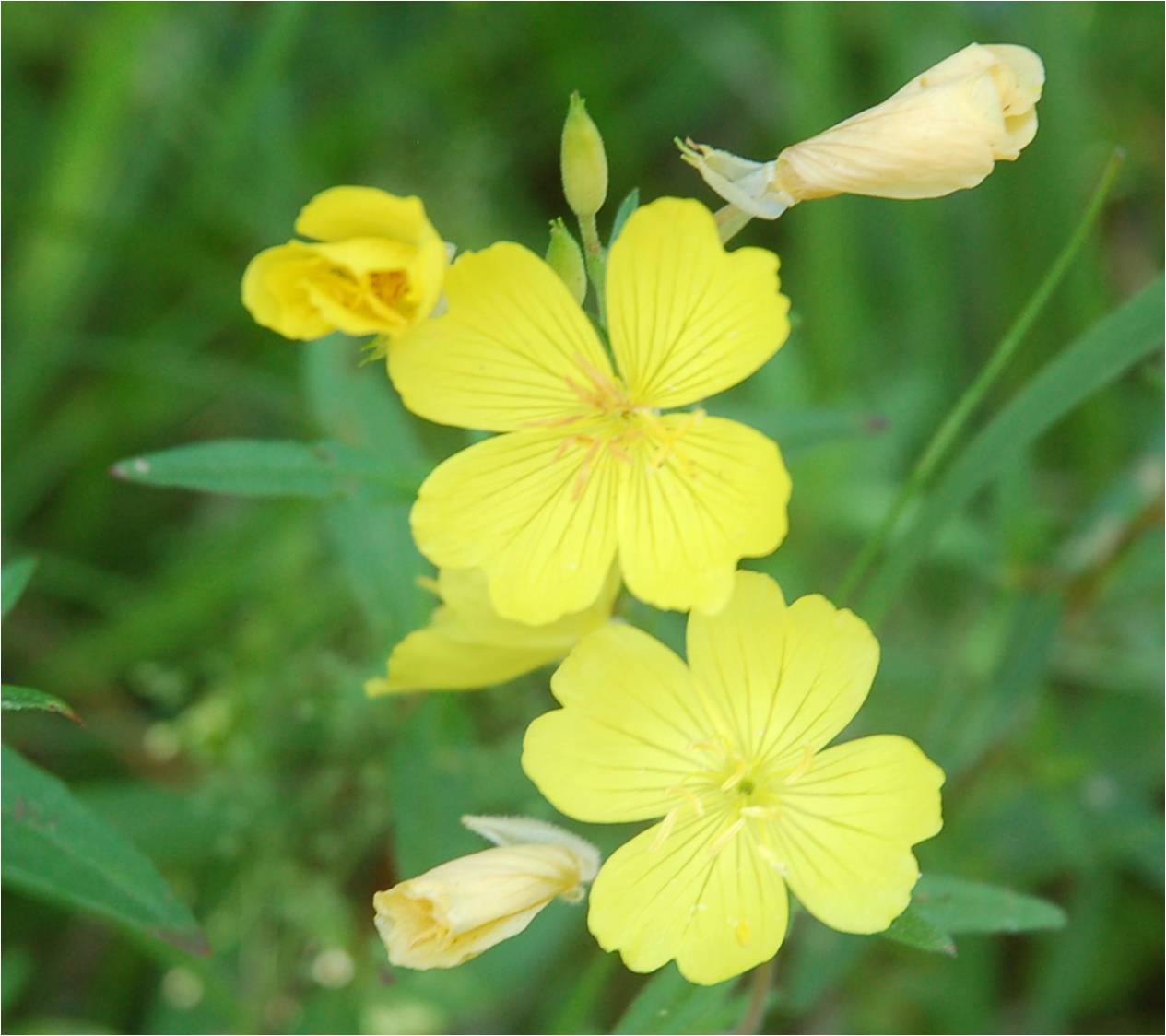
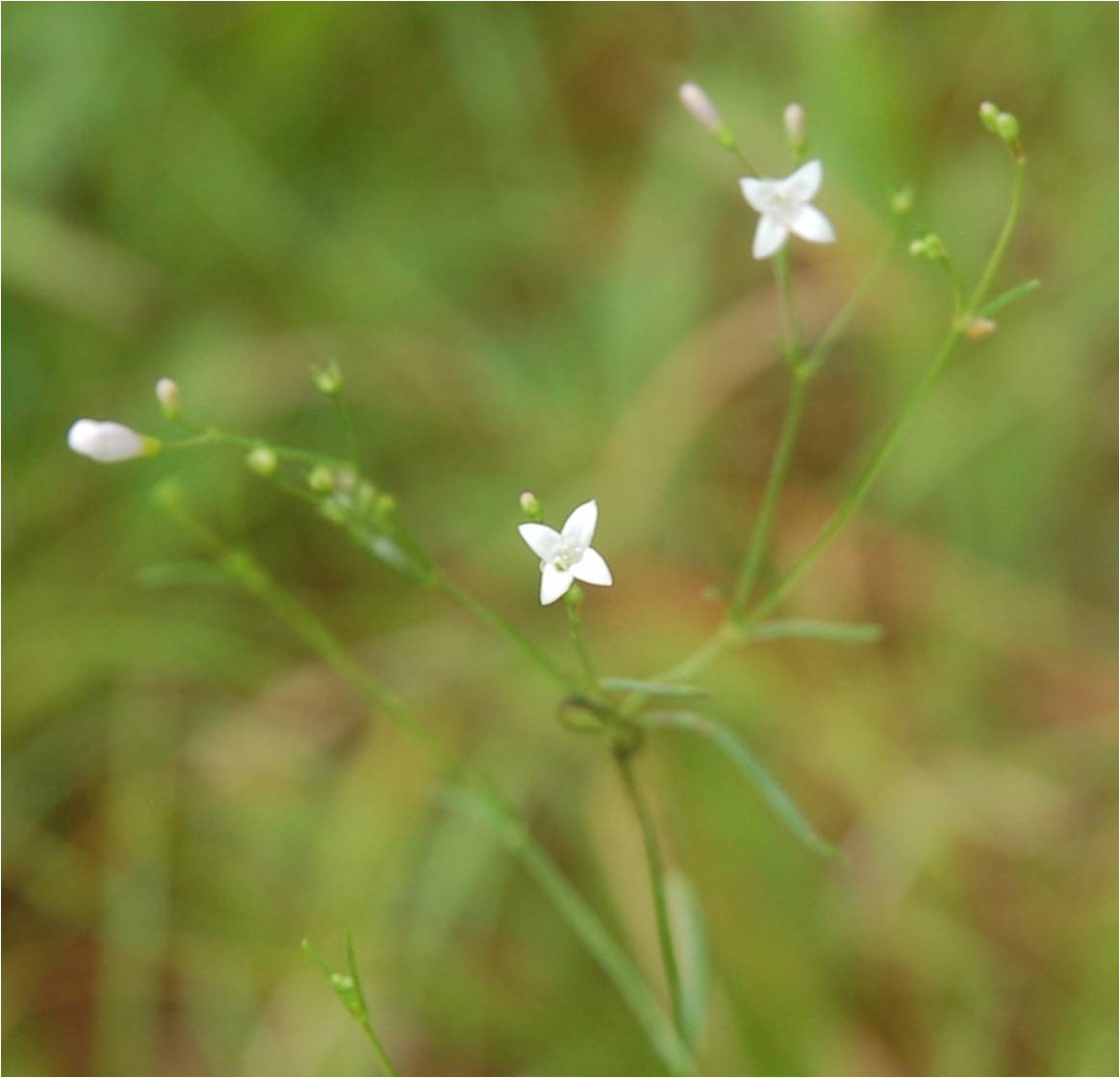
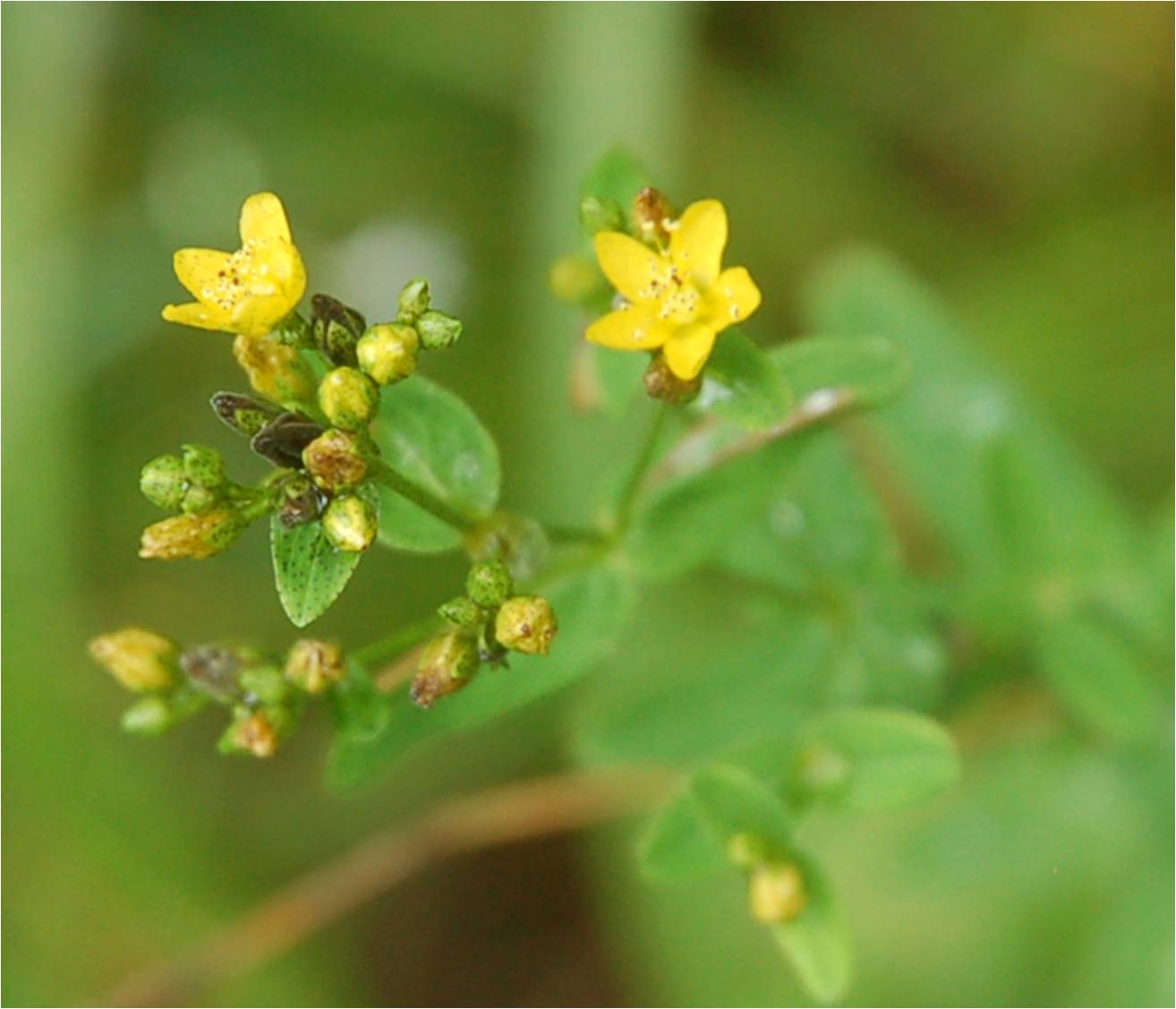
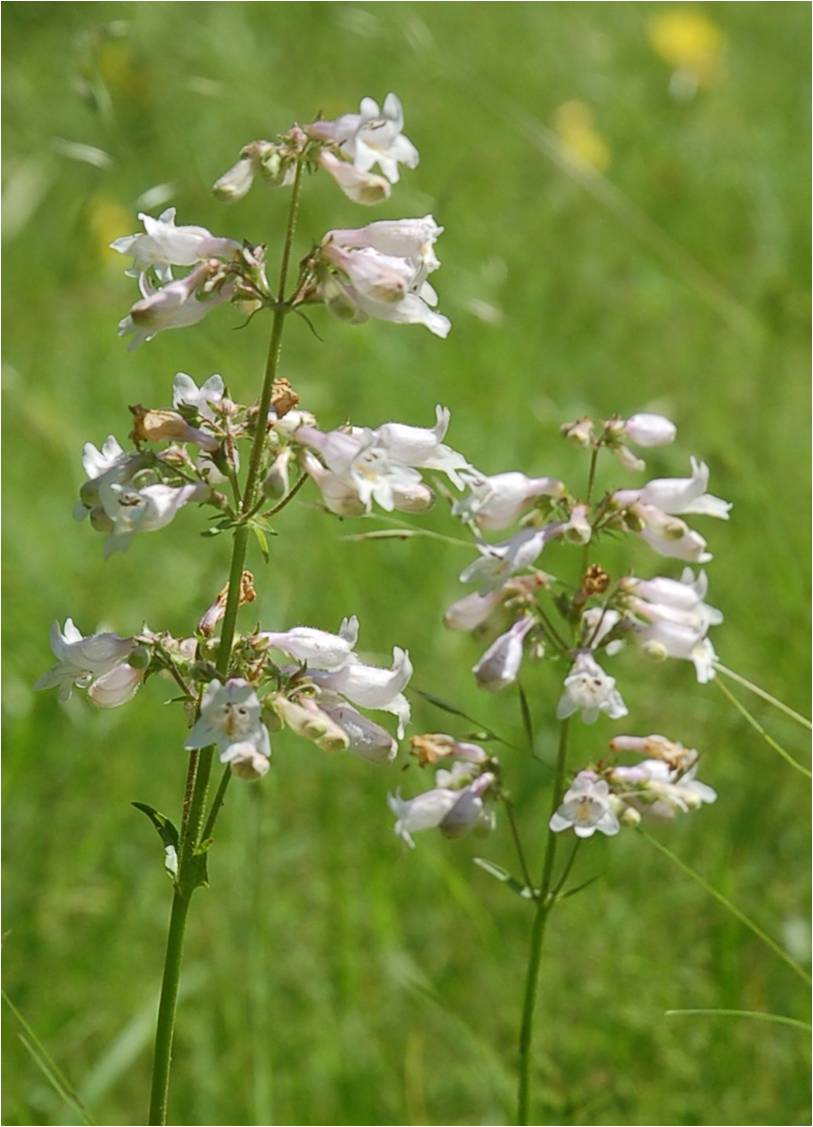

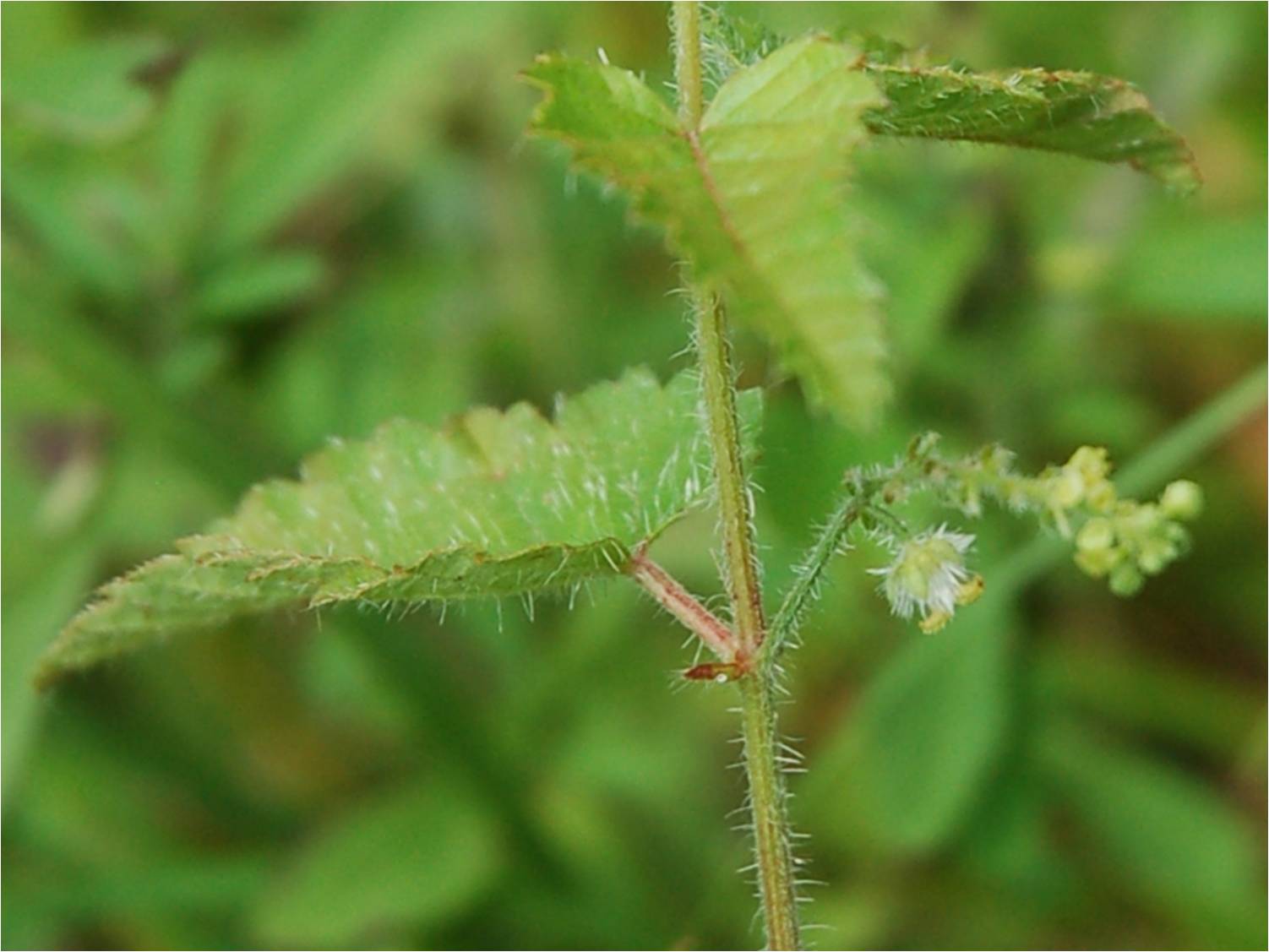
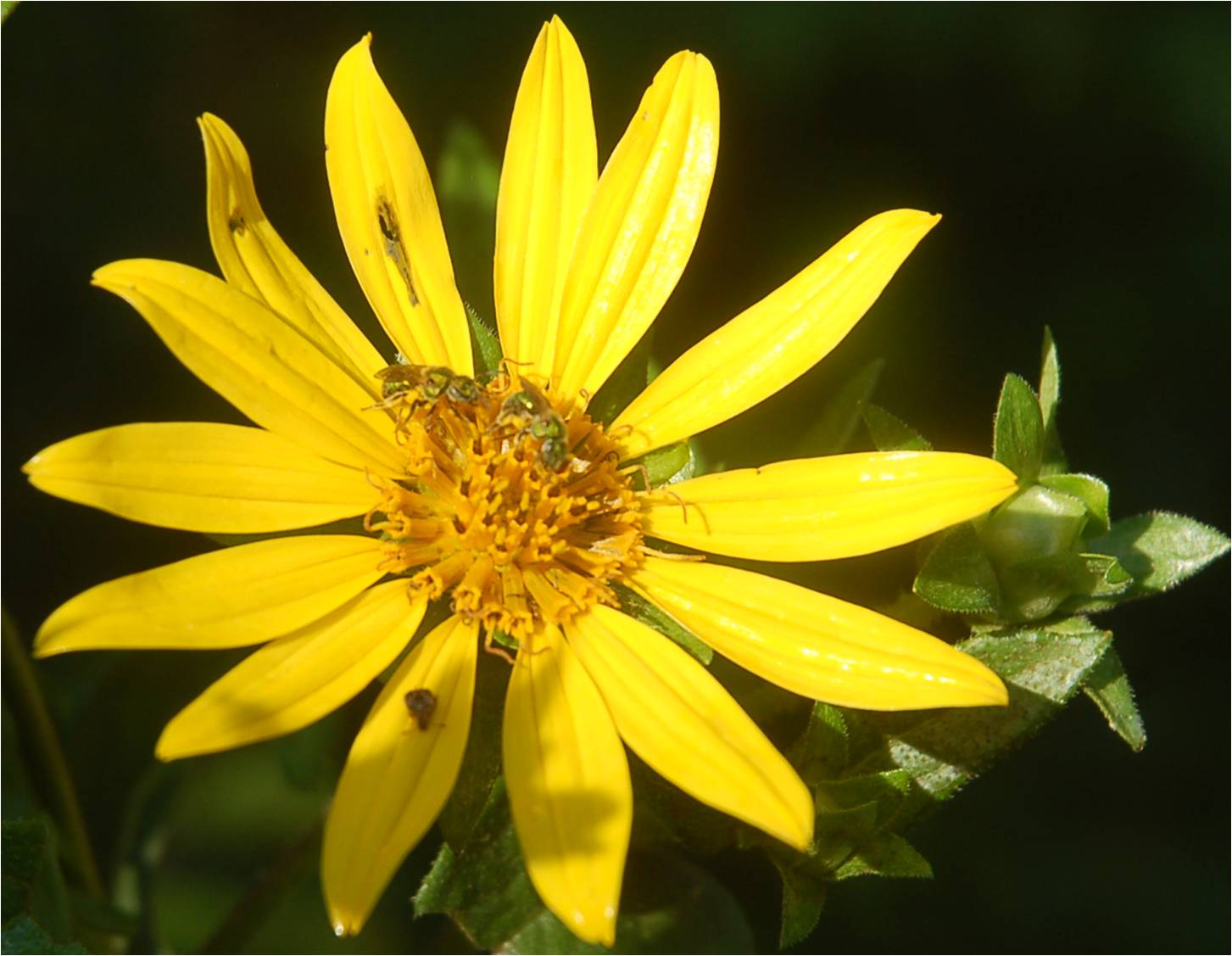
|
Diary of an Urban Watershed, Week 2by Tracy S. FeldmanBlog post week 2 (8 July 2014): Interdependence DayThis past Sunday I dressed, ate, and drove myself to Glennstone Preserve to get some fresh air and check out the woods before running this week’s Nature Explorers activity there ( Woodland Web ). Well, actually, cotton plants helped clothe me, cereal grains, cows (milk), and oranges helped feed me, and remnants of ancient plants turned into oil helped transport me to Glennstone Preserve, to breathe oxygen produced by plants in nearby forests and fields. To be even more accurate, bees and other insects helped the cotton plants to produce the cotton fibers that clothed me (and helped orange trees produce oranges from which juice is made), etc. It gets complicated when we think about our dependence on other living things. Still, I think it is a fun exercise, and even perhaps an important one. Complex interconnections between living things have always excited me for many reasons. First, learning about these connections makes me feel more connected with the world around me. Second, the interactions are like stories, and I, like many humans, am drawn to stories. Third, many of the bizarre features or behaviors of living things relate to their interactions with other living things. We can use any living thing to illustrate this idea. Take roses, for example. Rose plants have thorns on their stems and leaves, so it may be that roses with more thorns are less likely to be eaten by larger parasites (that eat parts of them without killing them) or by predators (that kill plants they eat). Leaves of rose plants help them capture sunlight, potentially shading out other competing plants around them (competition means using shared resources), and roots of rose plants help them compete for nutrients and water in the soil. Rose plants make flowers that look and smell good to us. The flowers are also advertisements to pollinators that eat nectar or pollen from flowers and move pollen between flowers to help plants make fruits. This is called mutualism, when both living things do better by interacting than they would alone. Mutualisms were initially attractive to me because I like the idea of cooperation, although it has become clear to me that most natural mutualisms can be viewed as parasites trading with each other. Each partner takes something from the other one, and the trade ends up benefitting both partners. Bees take nectar and pollen for food, and plants take pollen transport services from bees (many of which carry pollen by accident, or lose some by accident). To me, mutualisms also make good stories. Yet it seems that those stories are not told as often as those of other interactions. In google searches, only half of one percent of the hits are for mutualisms rather than for other types of interactions (predation, parasitism, and competition). This is also only slightly better in academia (e.g. Google Scholar), in which 1.5 % of hits are for mutualisms rather than other types of other interactions. In the next few paragraphs, I will tell some of the stories of mutualisms playing out in Glennstone Preserve, to make sure mutualism gets its due and to further illustrate interdependence between living things in general. First let’s look at the forest itself. At first glance, plants are competing for light above ground and for nutrients and water below ground. However, below ground at least, the situation is more complex. Plant roots are actually not as good at getting nutrients and water on their own as they are when they team up with fungi called mycorrhizae. These fungi can’t make their own food, so they need to get it from other living things like plants. But fungi can get nutrients from the soil like nobody’s business. The plants and fungi both benefit from the trade of food (sugars made in photosynthesis) for nutrients (like nitrogen). These fungi are diverse, and some are better at trading fairly than others—some take more food in exchange for few nutrients, and some give more (or perhaps plants are able to take more nutrients from some fungi than others?). In other words, some fungi act as parasites and some as mutualists—probably the same goes for the trees. Some plants like Indian Pipe are parasites on these mycorrhizal networks—Indian Pipe plants are white (no chlorophyll), and can’t make their own food, so they “steal” from plant-fungal mutualisms around them. Mutualisms are so successful, they abound with parasites too. Either way, the soil is brimming with this sort of interaction (see last week’s post for photos of mushrooms of some mycorrhizal fungi), and as each tree may host many species of fungi, each fungus may attach to many trees. This means that a network of plants and fungi is connected under the soil, and the forest may function, on some level, as one giant, interconnected super-organism. What’s an individual again? I love this stuff. Just as there are parasites on mutualisms, there are mutualisms that help parasites. If you’ve ever watched lines of ants walking up and down plant stems, you might have witnessed one of these mutualisms. Ants are known in the biology world as farmers and cowboys (perhaps mercenaries too), and ants commonly tend to insects called aphids (or adelgids, or scale insects) the way we tend to herds of cattle. Their “cows” look kind of like small blobs, and spend their lives with their straw-like mouths inserted into plant stems or leaves, sucking juices from the plant (aphids are parasites on the plants). In order not to explode by taking in so much fluid, the aphids expel some of the fluids, with sugars still in them. Ants take the sugars, and in return for “milking” their “cattle”, they protect their “herd” from insect predators and disease-causing fungi. Sometimes ants even move aphids to different places, keeping their herds moving to “greener pastures”. Some fungi also grow on the sugars exuded by the aphids, and some of these may grow only on those sugars. When I found a good example of an ant-aphid mutualism on Glennstone Preserve on a downy arrowwood plant (Viburnum rafinesquianum), I was happy to see evidence of another mutualism on the same branch—that between the plant and birds that disperse the seeds. 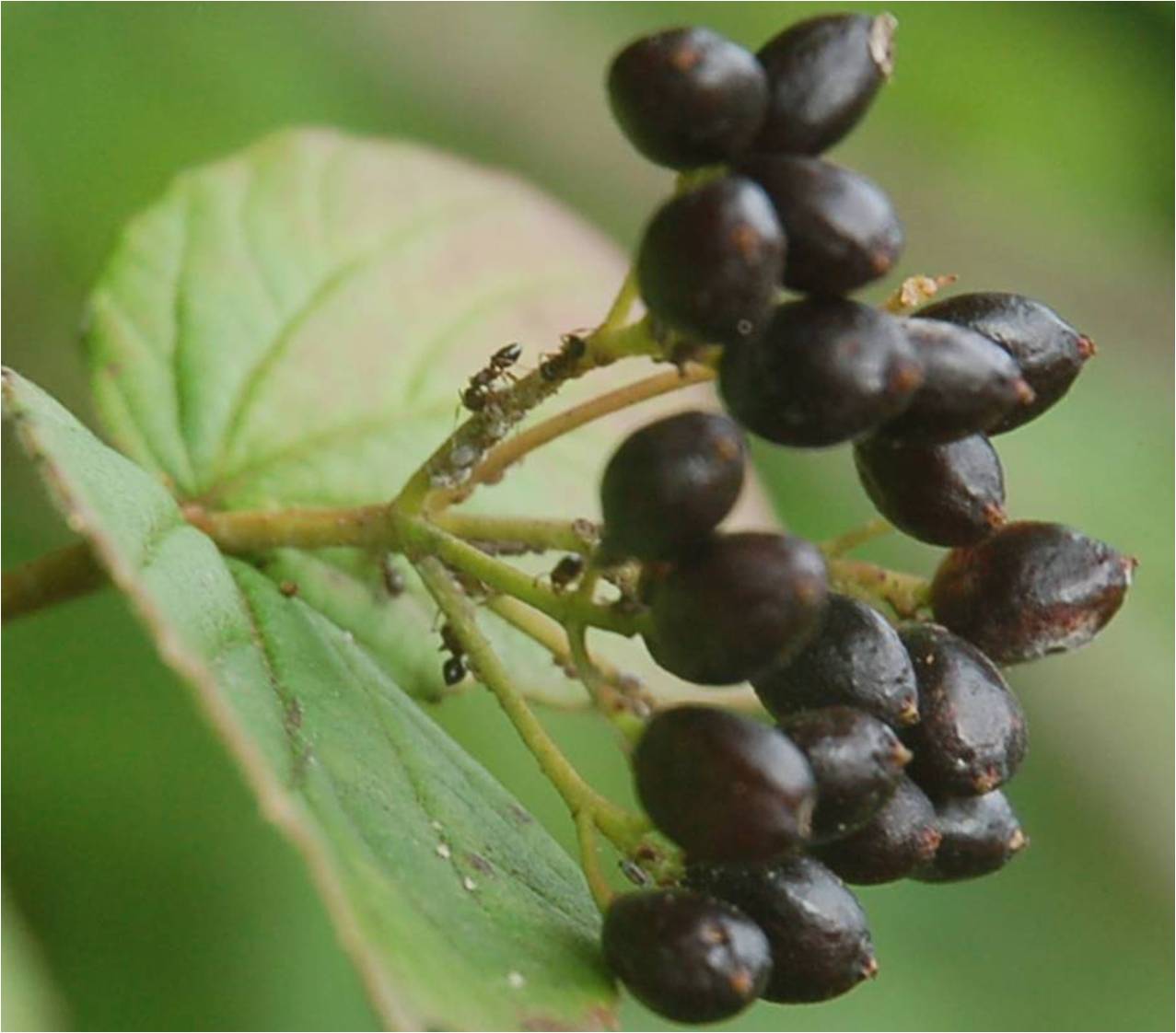
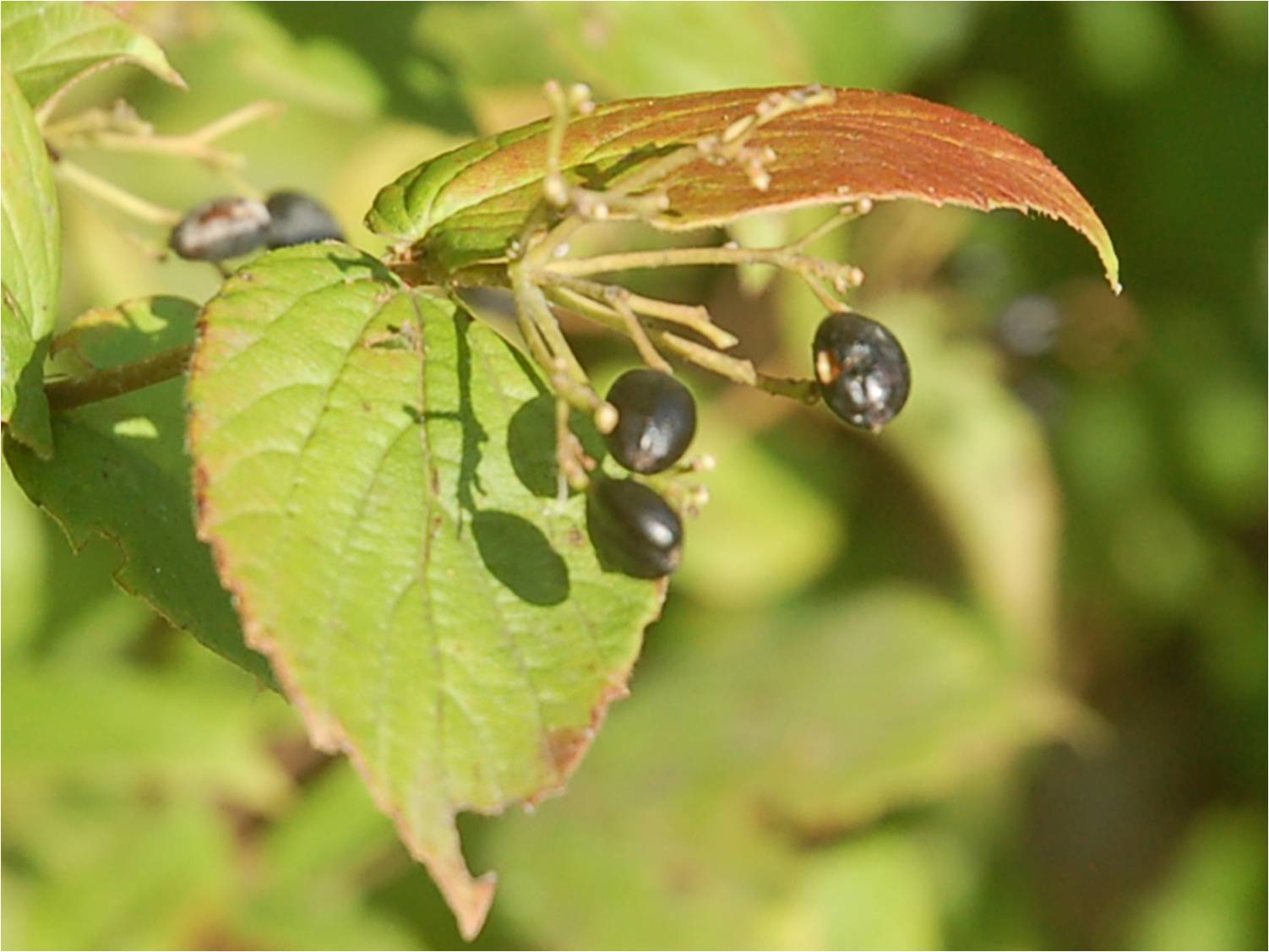
Despite my fascination with mutualisms, I do not deny that there are good stories in other interactions. Parasites (the flip side of the mutualism coin) make great stories. For instance, some wasps, flies, and aphids (and some bacteria) have “figured out” how to make plants grow tumor-like structures called galls. These galls are made when the insects inject their eggs into plant parts, along with chemicals that signal to plants to grow. The plants grow around the egg, making food and shelter for the baby (larva) that hatches out. After it grows up, the insect climbs or drills its way out. Gall insects are very diverse, and are often really specialized. This means that each gall that looks different from others, or is on a different plant or plant part is likely to have been made by a different species of gall insect. Galls abound in Glennstone—below are photos of three types of galls made by flies (two on goldenrod stems, one on Hickory leaves), one by aphids (on hickory leaves), three types made by wasps (on oaks), and one by a bacterium (on blackberry stems). 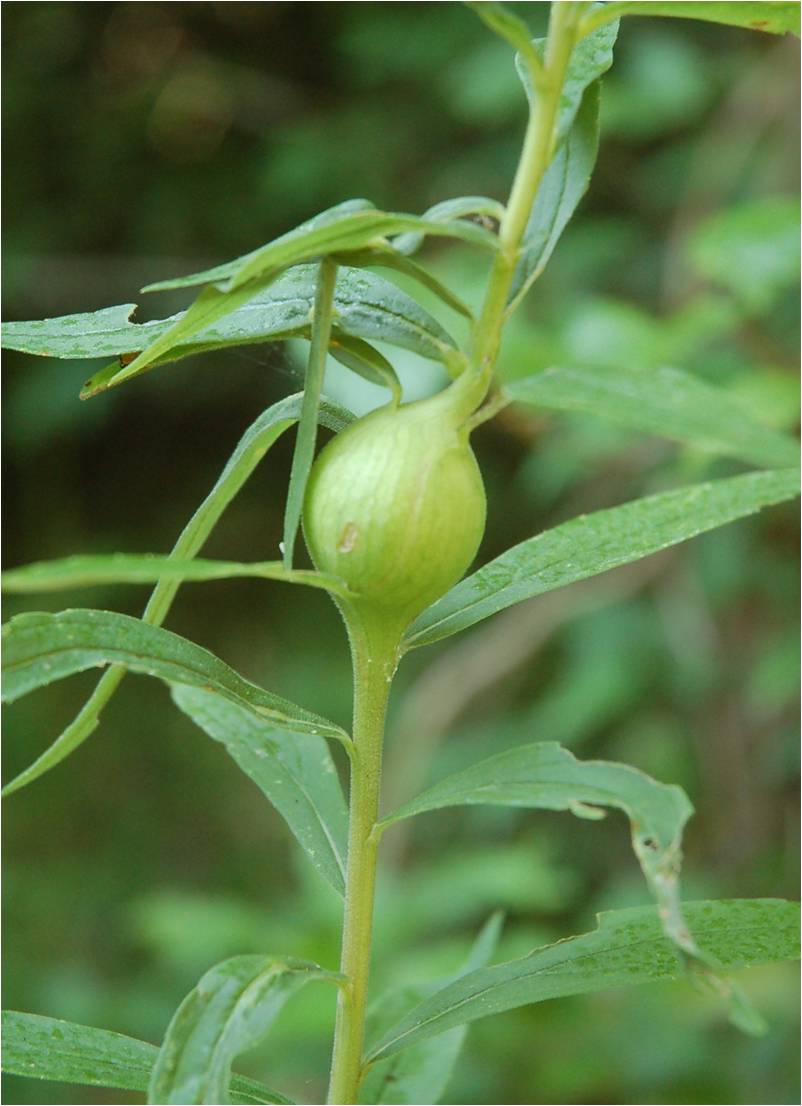
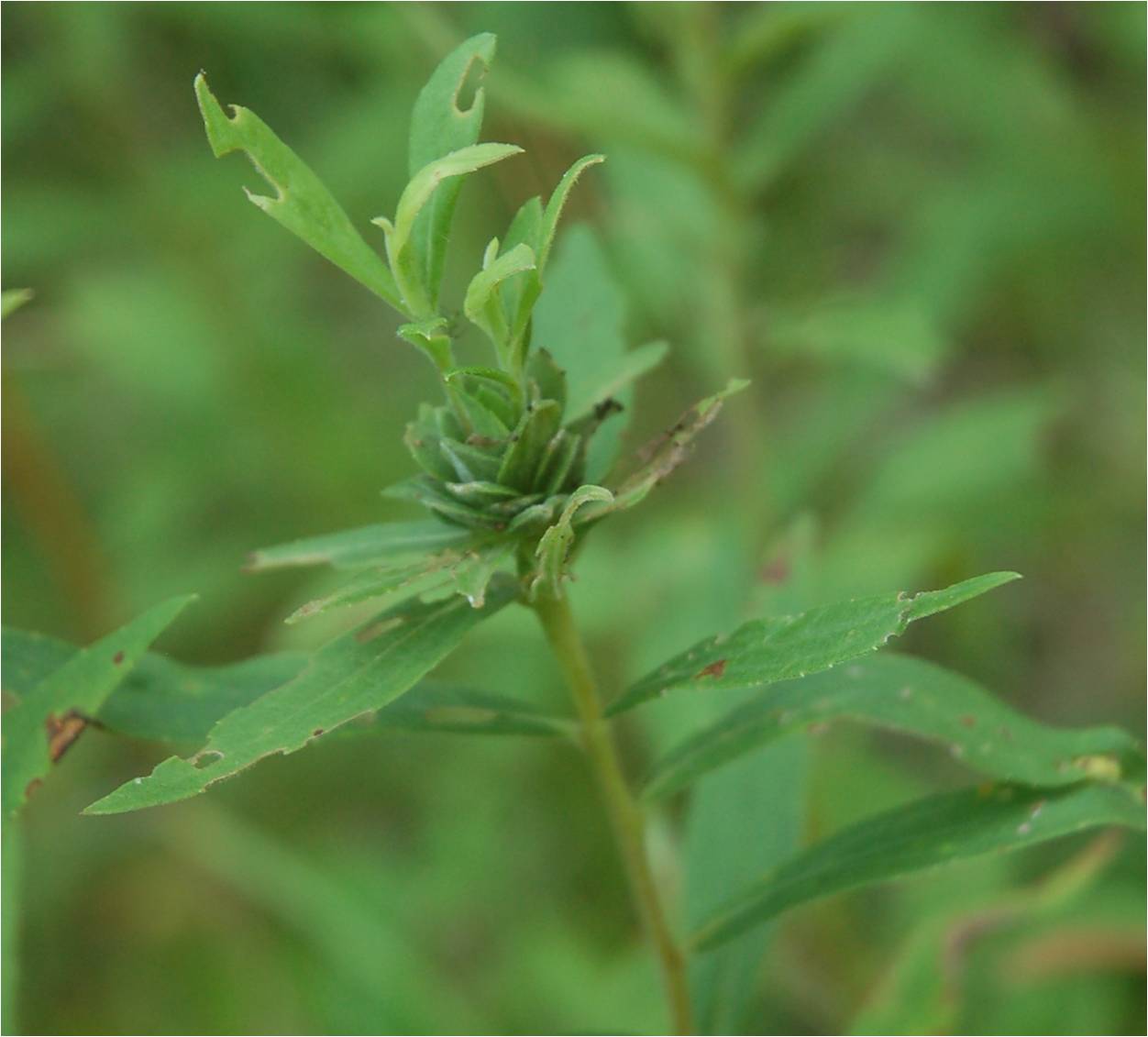
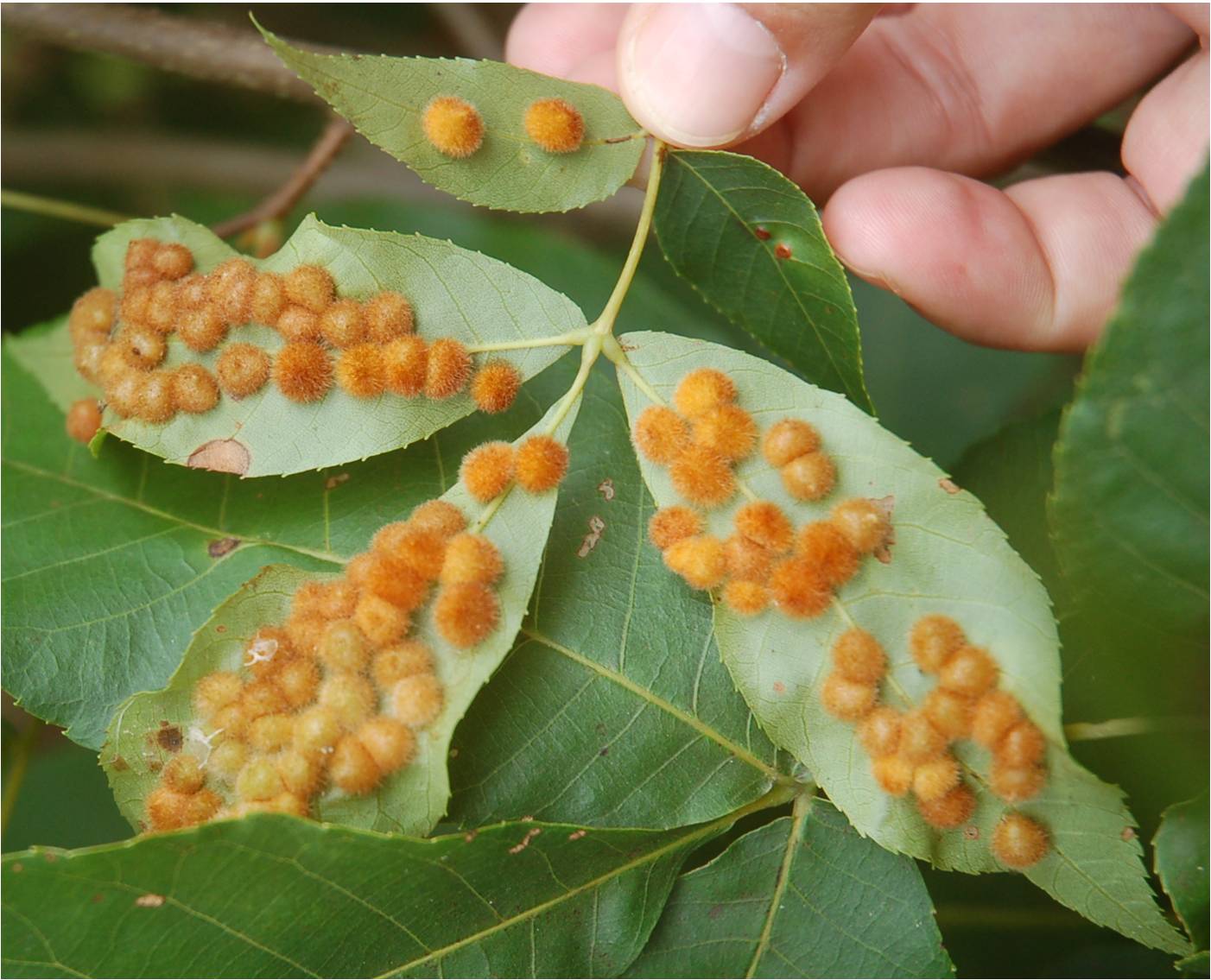
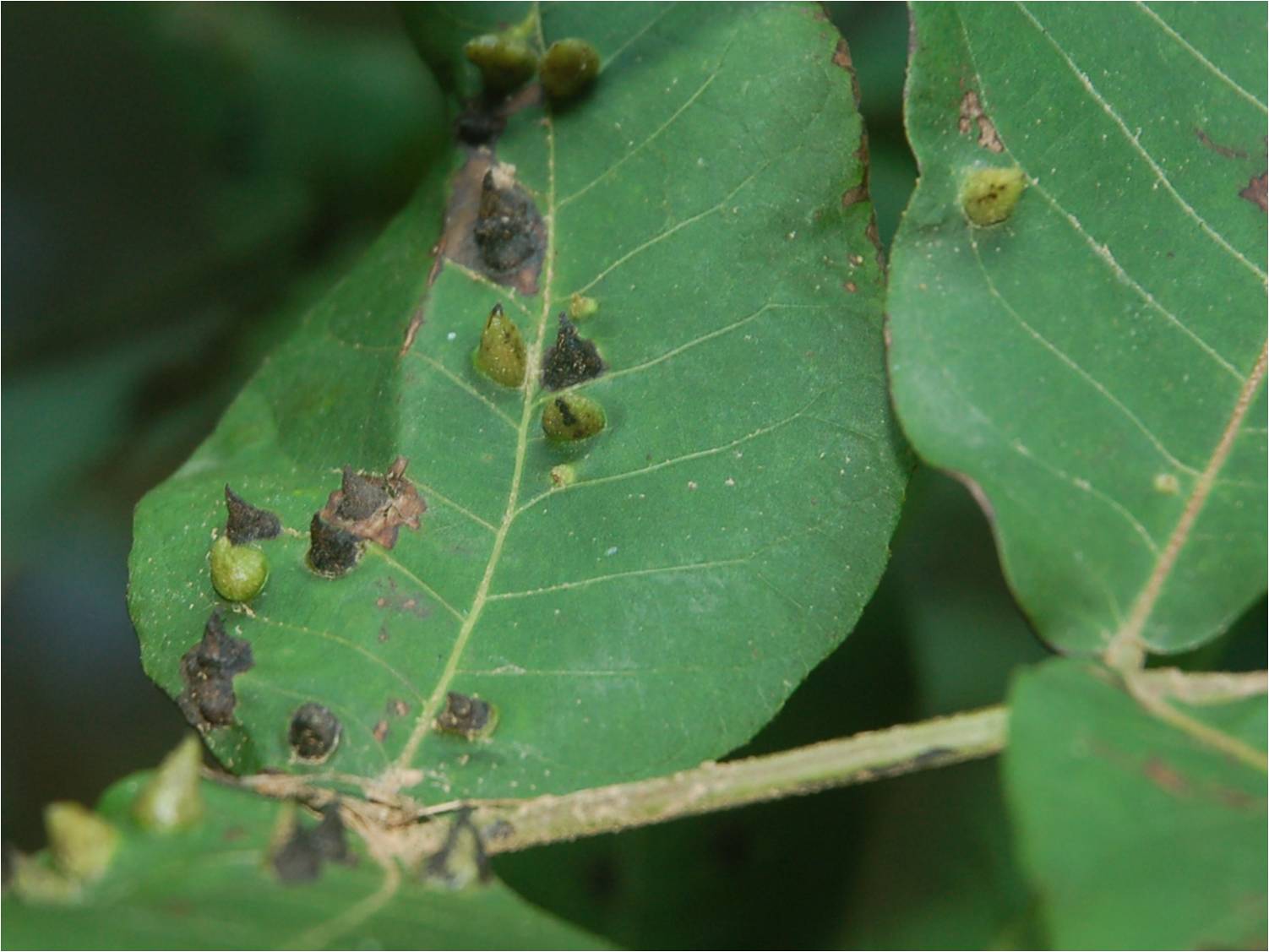
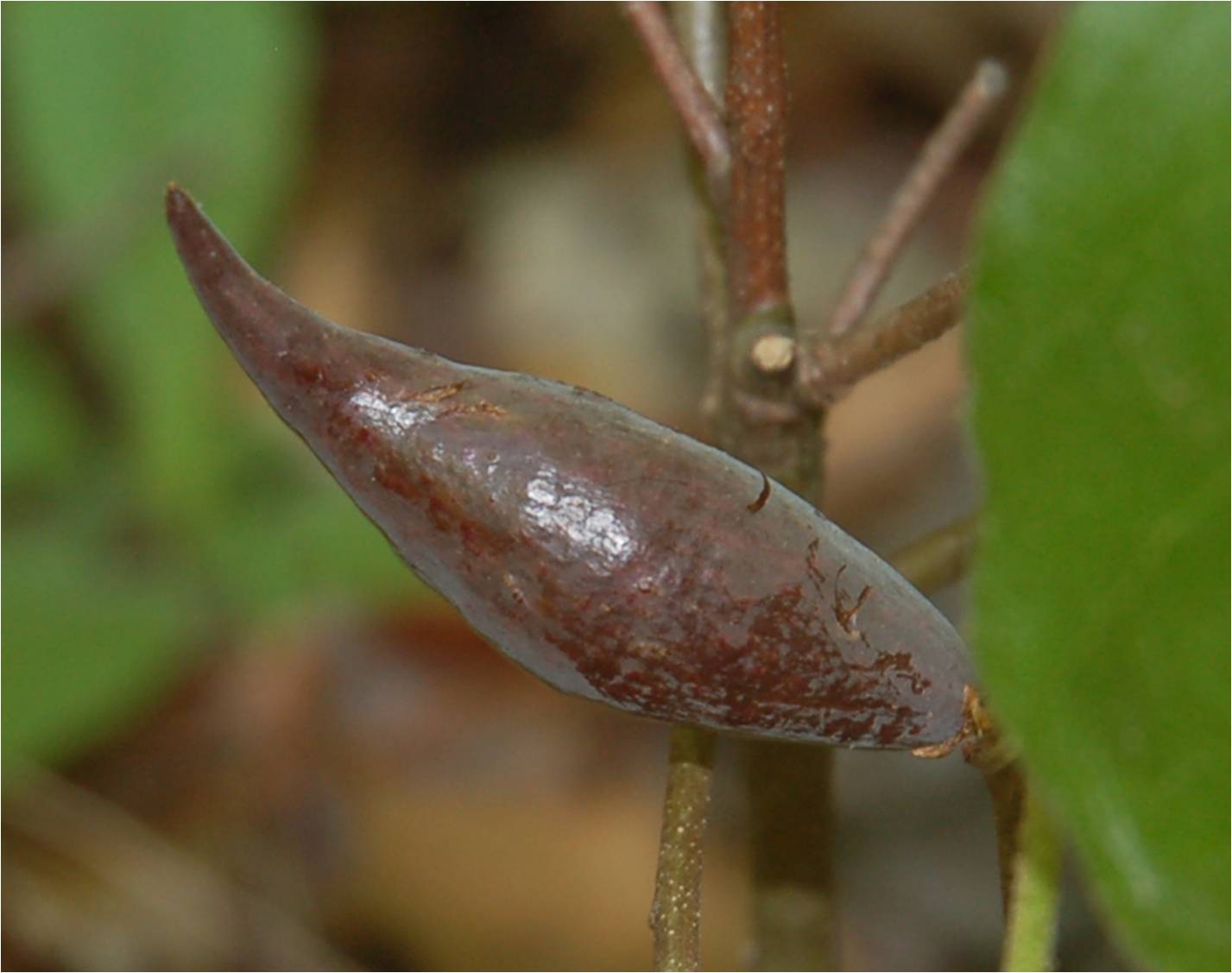
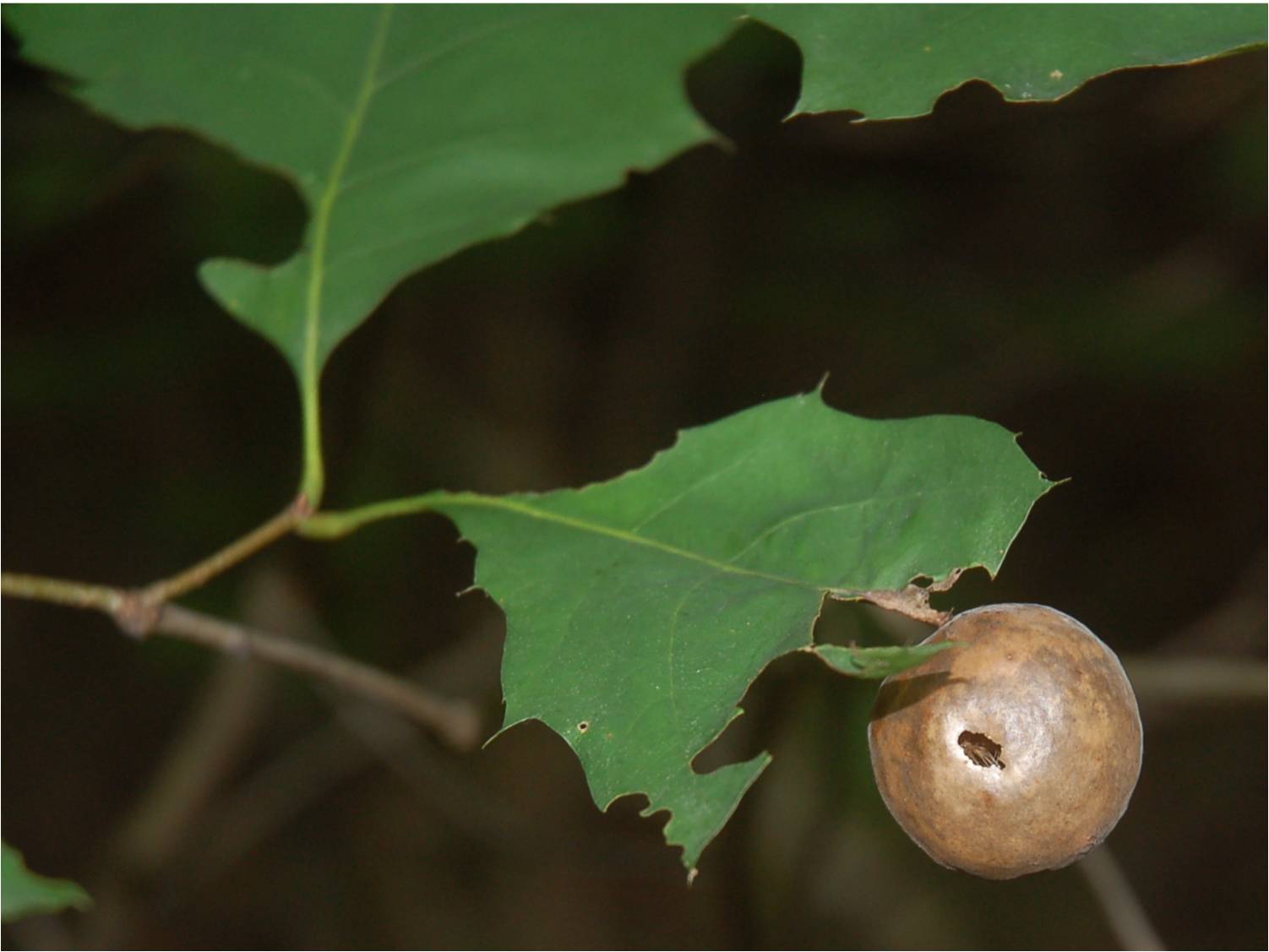
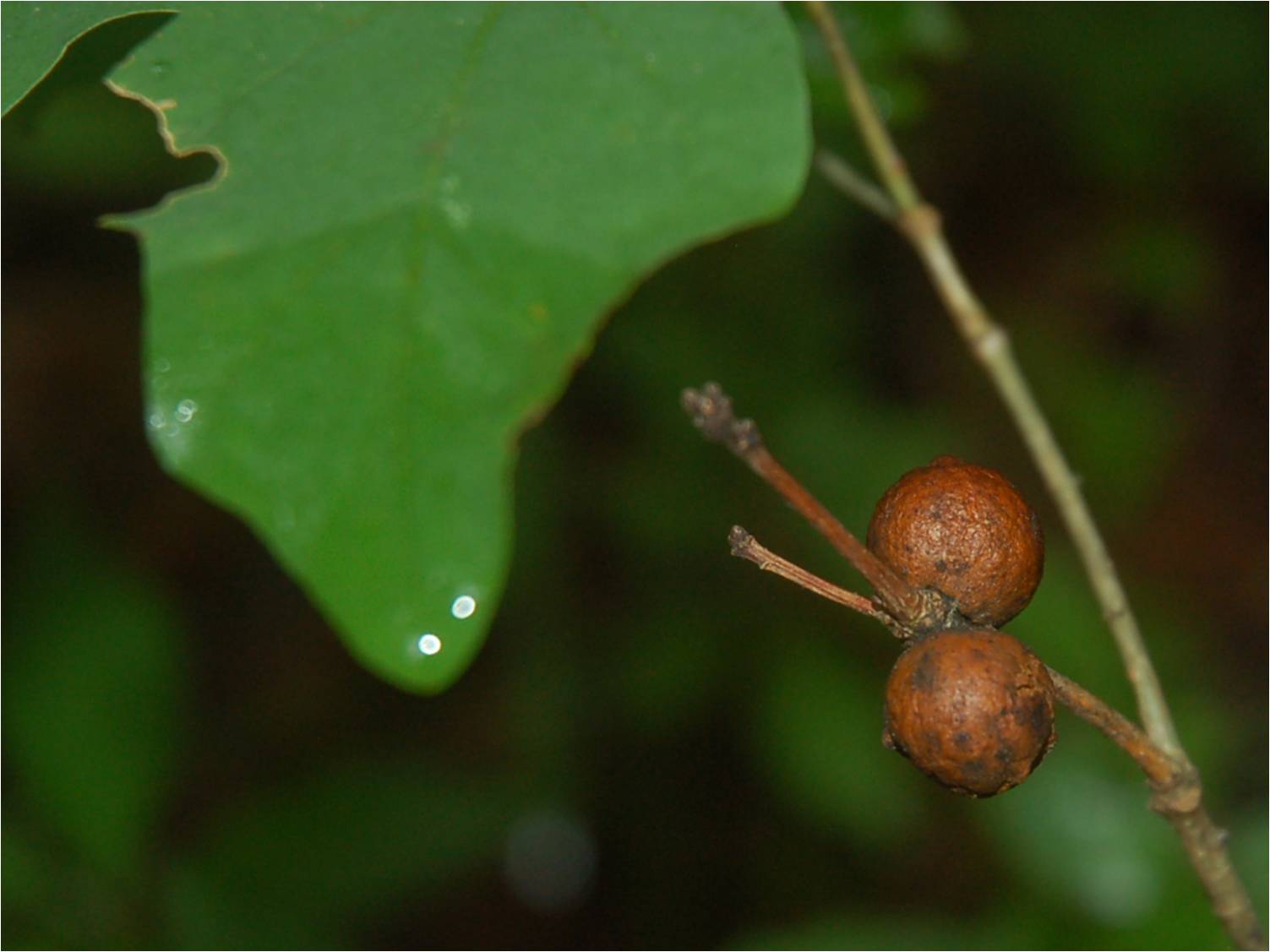
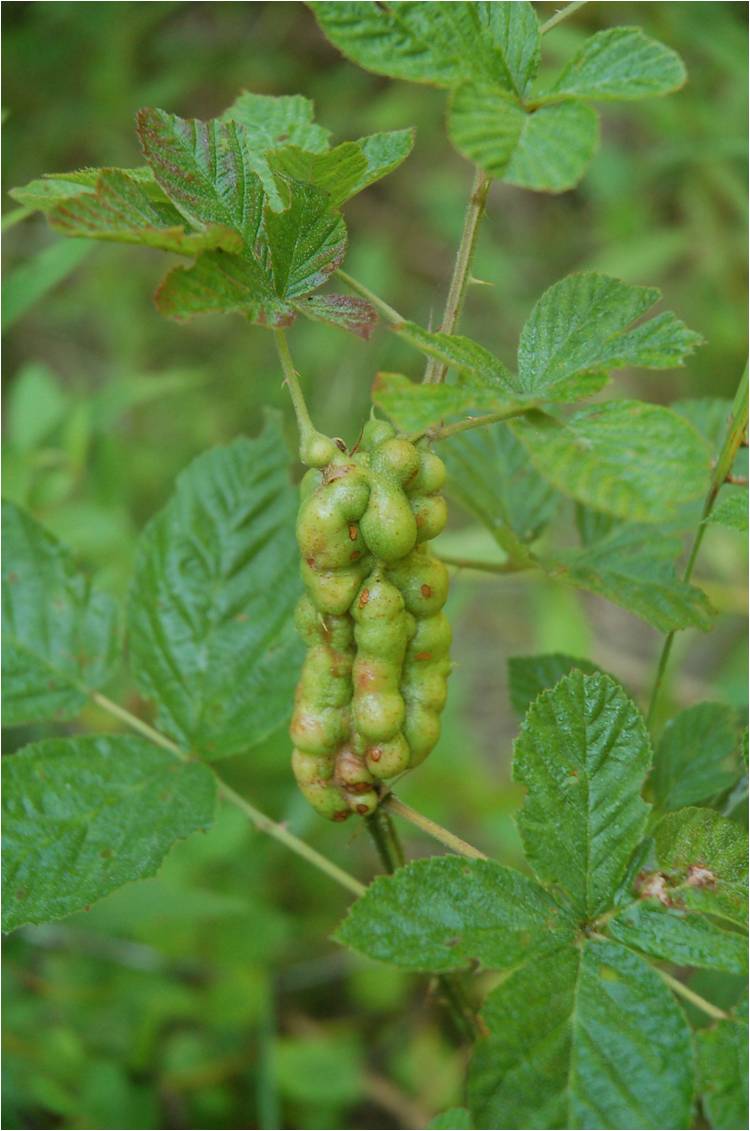
These are good stories. Are they anything more? I argue that our lives depend upon these interactions. Our food is produced by pollinators as well as farmers. Our forests are constructed and mixed by seed dispersers and are sustained in part by a network of fungi. The very air we breathe is made breathable by plants in our forests, as well as by oceanic algae and bluegreen bacteria. Everything we have in life is at least in part made possible by other living things. I think about interdependence a lot as an ecologist living in a world with limited resources. I also think about interdependence on personal level. This Independence Day, I spent time at the Festival for the Eno, playing music, listening to other musicians, eating good food, talking with friends. As Americans, we pride ourselves on our independence, both as a country and as individuals. These are worthy of celebrating. I love writing songs and performing them on stage. This feels like an individual accomplishment, even though I know my music and lyrics are strongly influenced by the ideas of others (ideas remixed, as Kirby Ferguson recently pointed out in his TED talk ). I love walking around on my own through the crowds, even though part of my sense of confidence here is built upon connections with family and friends in the area—my individual contributions to the place where I live (the ecosystem) and the people in it (society). For me personally, as well as ecologically, it feels good to pay homage to my own interdependence. Selected References:
Links: |
Natural history photos by Tracy S. Feldman.
Created and maintained by
tsf
Last updated July 2014
Created May 2014
